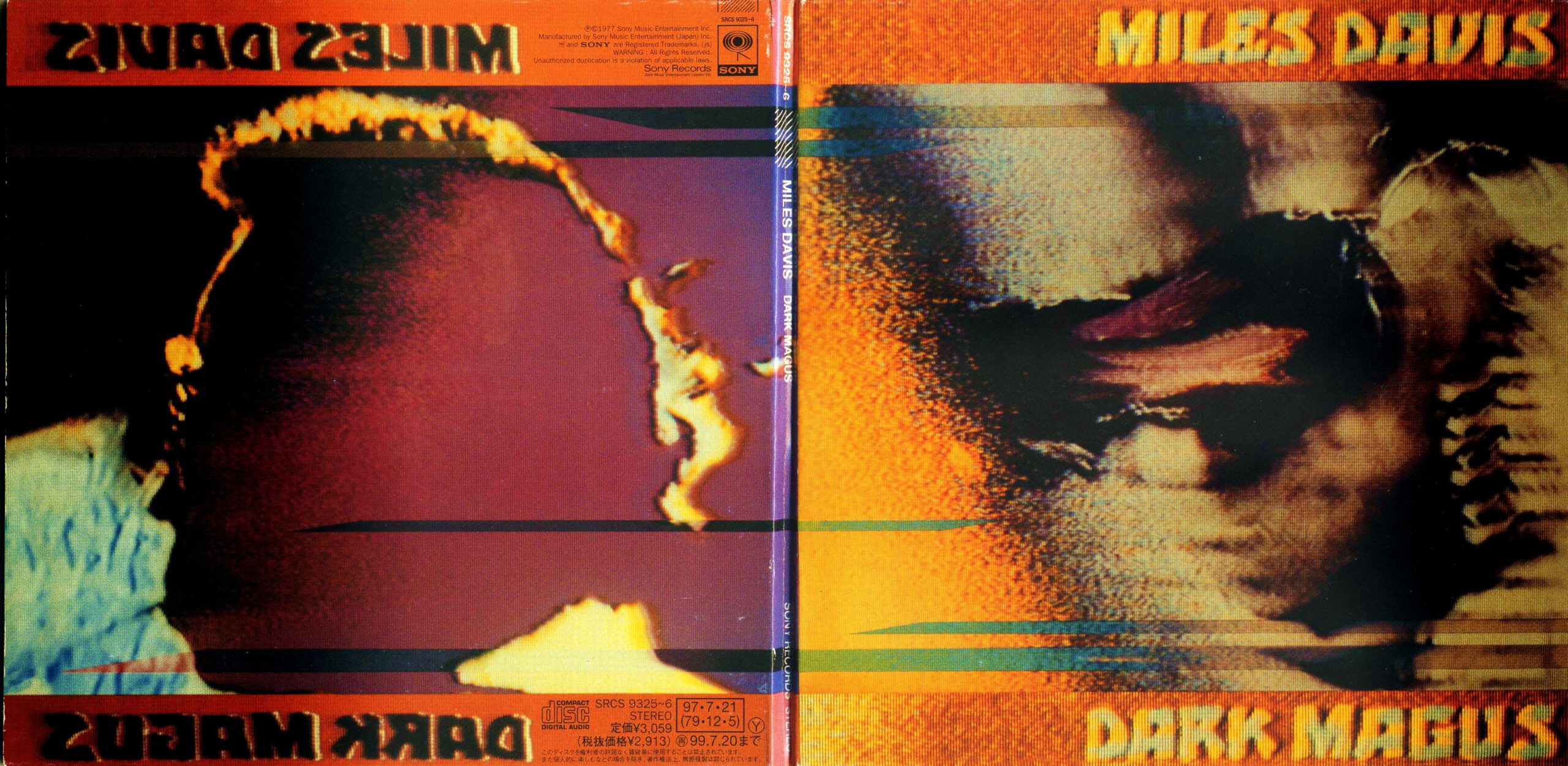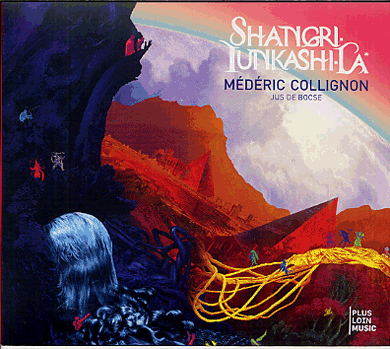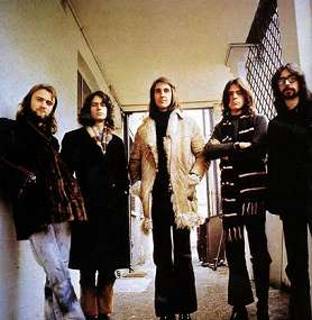
I’ve been waiting to do this one for a while. It’s the third song/side from Miles Davis “Dark Magus,” live at Carnegie Hall in 1974. This is the psychedelic funk at it’s finest, and I get way into the minutiae al the way to the triumphant finale. p.s. No YouTube for this one, but you can listen to the podcast on Apple or Spotify.
Thanks for checking into the Escape Pod!
This is such a wonderful and disturbing album. It’s right near the end of Miles electric 70’s chapter. Just a few months later he went into retirement that proved temporary, but no one knew that at the time. He probably would not have survived without that break.
To a certain extent you have to mine the depths with these albums and you have to be patient. Once this became the Al Foster era, things got looser and crazier. There is even more emphasis on improvisation and incorporation of rock music ideas.
The version of the band on Dark Magus, which is a performance from Carnegie Hall from March 30, 1974, is Foster on drums, Reggie Lucas, Pete Cosey and Dominque Gaumont on guitars, Dave Liebman and Azar Lawrence on saxes, Mtume on percussion, Michael Henderson on bass, and Miles on trumpet and keyboard. There is no piano or keyboard player on this set like there is on ‘In Concert’ from another New York show in September of 1972.
Incidentally, we are so fortunate to have these single-night-of-music recordings from one of the greatest musicians in history. I realize they are produced, but they still offer a pretty accurate snapshot of where Miles was at before he went into ‘retirement.’
I was introduced to this era of Miles through the last ‘official’ recordings, released as Agartha and Pangea. They are both from February 1, 1975, and when you know this is the end, it is hard not to hear the pain and sadness which must have gone into the decision to step away. The music, like all albums from this particular period of Miles’ life, is challenging and rewards the listener with some deep emotion. The substitution of Sonny Fortune instead of Liebman and Lawrence on sax is an improvement over an already favorable situation.
But let’s get back to Dark Magus. There is no question that you hear a lot of the pain and difficulty Miles is experiencing. I imagine that the keyboard is there to compensate for some of the trouble he is having now with trumpet. Bob Dylan would pull the same stunt in the last decade, opting for keyboard as the guitar proved to be too much of a strain. And you can hear that strain in a lot of Miles’ trumpet work, not just on this record, but from all the live shows in this era.
And yet, there are moments in this set where it all falls away and you hear a sound so strong and demonstrative that there is only one human being who could have played those notes like that.
The most obvious choice to listen to on this beefy set is the second side of the first lp – Wili. The song / side titles are simply the Swahili words for one, two, three and four. Wili means two.
Michael Henderson, who struggled at times in the 1971 band with Kieth Jarret and Jack DeJohnette, lays down one of the funkiest bass parts you’ve ever heard. The tone and the feel, matched with Al Foster’s wide open playing suggests such a monstrous jam to come. And believe me, it’s a good one, but for me it doesn’t match the intensity suggested at the outset. Give a listen:
—play first minute of Wili pt1
That is some skanky intro. Miles comes in with these disruptive chords on his synth. But the drums and bass just keep chugging along with that skank. The problem is that they can’t get back to that vibe and the jam ends up being a bit draggy for me in the second half.
The next tune, however, is the one where I want to go through and detect every turn and trick because it is 25 minutes that could be the best of the best, a culmination of all that Bitches Brew promised and threatened, and also a testament that needs to stand for a bit. By shutting off the fountain for a while, Miles is ensuring that the music of this end point will get extra scrutiny. Scrutiny it deserves.
So, we go to Tatu, which would have been Side three of the double LP set (and which is the Swahili word for three). This is loosely based on songs that have elsewhere been titled “Prelude” and “Calypso Frelimo.” Both of these can be found on other live albums and compilations from this era. I will confess that I didn’t know that when I first prepared this essay, but I also think that is part of the point. By not otherwise identifying these songs, we are forced to deal with them as individual units. And I think that’s the right approach, because these are not the COMPOSITIONS the Miles is known for, now that we are a few decades down wind from his passing. Instead, these are the improvisations that he is known for, and the way he activated his band to rise into a high plane of existence where the music in his head could finally become real. That’s what is very special about this era.
Miles had done this with live records before – the ‘At Fillmore’ album was another double LP set where each side was one continuous song – in that case the titles are Wednesday, Thursday, Friday, and Saturday. A posthumous release of the same album came out in 1997 has the actual titles and track divisions, meaning that you don’t have to listen to the whole 25 minute track, if you just want to hear Bitches Brew, for example. A later release of Dark Magus breaks up the sides also, but does not use the actual names of the “songs” to identify the breaks.
By the way, I’m referring to time (minutes and second) in this essay. These times relate to the later version of Tatu, which is split in two. This is not how I go tot know the song, but this is the the version I have for reference. So if you are following along, that’s how to use the time references.
Anyway, I’m discussing this as if it is ALL made up on the spot, because that is essentially what is happening, but as we begin, know that this jam is somewhat based around themes from Prelude and Calypso Frelimo, maybe also Big Fun/Holly-Wuud. I really can’t say for sure.
So Miles starts this off, on keyboard playing a theme that I think is basically the song “Prelude,” but it doesn’t really matter. It’s simple enough so that audience and band alike can follow the “narrative” without knowing the “song.” At 1:40 Henderson basically takes over on bass. And this is easier for a guy who has been in the band for several years now. He holds up to create some early drama. Whether that’s his idea or Miles conducting his band, I don’t know (there is apparently no video), but it works great.
Pete Cosey is soloing with his array of effects through the first couple minutes here and you can really understand why Miles was so totally knocked out by this guy’s playing. It’s pretty close to that jam with Jimi he never got to have, but with even more effects and mayhem.
It’s a monster of a solo (sometimes with effects that make you forget you are listening to a guitar, but it doesn’t actually move the band from one place to another. Rather than big narrative shifts (which are reserved for Miles himself), this is a chance for the bandleader to relax and enjoy his lead guitarist’s amazing skills. So Cosey has a great amount of space to work in, but to me these jams, which are frequent in this era, tend to sometimes feel a little static. That being said, there is some hooping that sounds like it could be coming from the horn section. So even though the drums and bass are keeping things cool (after all, there is a long way to go), the guitar’s intensity is built to a dynamic crescendo with some help from the band. Again, hard to know if this is Miles directing traffic or if this is more of a spontaneous phenomenon without video.
Around 6:37 it sounds like Cosey is wrapping up, even throwing in his own version of some Miles-like riffs with the sinister wah-wah. Miles comes and bails out him / cuts him off with some keyboard hits. This pushes the jam to a new place, that’s the power of Miles. It also signals a transition is coming.
Break at 7:30, with a tease to go back, but really a much needed breakdown. This is the lower depth and volume where you can explore. Cosey writes his finale on the fly by using the space that Miles is giving him for the transition. But at this point things take a very different turn.
The exploration comes courtesy an incredible double sax solo, and this is just such a successful and satisfying turn of events where the two horns are able to pull off this trick where they had to solo together. It is at times almost like delay that is so dramatic and effective on Bitches Brew. Miles urges them on with sinister side-eye synth chords, which then breaks us all the way down (10:32) to some major chord comping from the rhythm guitar. The bass is relegated to a single note on rhythm. It’s an amazing effect. I believe the major chord comping is Reggie Lucas (or Gaumont? Anyone?), who must have had one of the hardest jobs on stage as second banana to Cosey. Cosey uses all the effects and has all the big solos. What is rhythm guitarist to do?
There is a great effort to keep everything in this nice, quiet and cool space, but it keeps threatening to go too far. It is such a sweet groove, but the band is restless. A little more synth at 13:50, descending as if to tell everyone to stay chill. Miles seems to be coming down the stairs on his synth with the intention of entering the ring and doing some damage.
This leads to some additional hype and setup from the sax and an enforced break at 15:31. Sax suggests we may be entering more relieved moment, relating back to the rhythm guitar’s major chords, but Pete Cosey storms back after the break to dial to up the evil.
This is the moment Miles’ trumpet can finally make its very first appearance of this jam. Whatever unknowable monstrosity Cosey can call up on guitar, no matter how deranged and soul destroying, it is nothing NOTHING compared to the power and glory with which Miles enters the fray. The last 90 seconds of this track culminates Michael Henderson and the rest of the string section laying down the Sly Stone-esque groove, and it is supreme. But nothing so perfect can last. And we move to the second part of Tatu. A little over six minutes to go.
The band pauses and Miles returns to the DX7 and there is some noodling followed by a simple chord progression that appears to be an “A” part, that matches with a hurried “B” in a different key. (I think this relates to Calypso Frelimo, but also maybe Holly-Wud – any help out there? Also, this back and forth reminds of how an earlier band used to play Masqualero live in 69-70) So the band can vacillate between these very different sounding feels and play together but also have a ton of space to improvise. And nobody can occupy that space better than Pete Cosey. He drops another doosey with lots of organ to urge him on.
Meantime, even during the hurried part, Reggie Lucas rhythm guitar continues to suggest the quiet part which they get back to at 2:45 of the Tatu Pt. 2.
Now Miles will play the happy little keyboard chord progression with tuned percussion to back him. This is another classic Miles cool vibe that’s mellow and atmospheric as anything he played throughout the 60’s. The tuned percussion is really the attraction here, but the keys, guitars and drum vibe are getting so tasty as we get hyped for a major helping of trumpet. No one can set up an entrance for himself better than Miles. In some ways this is the same trick as in the first half, but there is even more strength and confidence this time. It’s almost like all the hard work for this track is over and now Miles is going to take everyone out for happy hour. You can picture him stalking he stage as the horn snaps at each member of the band and audience. The blues he leaves us with is transcendent and I just want it to go on forever.



